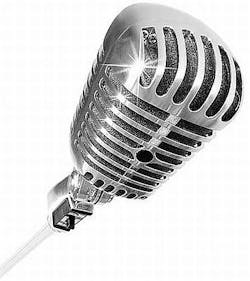An interview with Brendon Van Campen
Militaries and other government entities are adopting modern and, in some cases, automated lighting solutions to help meet energy- and budget-related goals.
What energy-related mandates must the U.S. Department of Defense (DOD) and other government bodies meet?
As of 19 October 2011, the Department of Energy (DOE) mandated that all states must adopt an energy code as stringent as the latest ASHRAE Standard (90.1-2010) by 18 October 2013. In addition, the Energy Policy Act of 2005 mandates energy reductions of 30 percent in government facilities by 2015, compared to the 2003 baseline. Additional federal energy policies include the Energy Independence and Security Act of 2007 (EISA 2007) and two Executive Orders (EO 13423 and EO 13514), all of which mandate overall building energy reductions over established timelines.
Most Department of Defense (DOD) new construction projects are designed around a minimum LEED Silver Rating and ASHRAE 189.1, as outlined by the US Green Building Council/ASHRAE.
It is also very helpful to note that, while not specifically a mandate, the DOD introduced the new Unified Facilities Criteria (UFC) 3-530-1 Lighting and Controls Change 3 in September of this year. This is one of the best and most comprehensive design criteria documents we have seen. It outlines energy-saving design applications and new technologies by space-type for lighting and controls that DOD and private IDIQ firm specifiers must incorporate into future military construction designs.
BIO
|
What are military customers requesting?
I would say that the most common request from DOD customers at all levels is educational in nature. There is recognition that the mandatory energy-reduction requirements outlined above, as well as changes in current and future energy codes and design criteria, all incorporate a much higher-level use of this technology and the understanding of how this technology can and should be applied.
We spend a great deal of time educating DOD customers and their contractors at all levels on what can be achieved with the new technologies. We then work with them to update their internal specifications and RFP language (in the non-proprietary manner required by the government).
Lutron has heavily invested in experiential training facilities around the country, which are open to the public and are designed to allow the federal and DOD (or any) user to experience lighting control in real-world, space-type applications.
Government customers also are increasingly interested in working with Energy Service Companies (ESCOs), as the Energy Saving Performance Contract (ESPC) model is being rapidly adopted throughout the DOD.
One of the main stated goals of the DOD is Strategic Energy Independence. Lutron can help government customers focus on lighting energy-efficiency, reducing the total energy demand of the facility to a manageable point. This enables other renewable energy and self-generation technologies to be able to support the base or installation when it might be off the national power grid.
How is Lutron helping the U.S. DOD meet these goals today?
At Fort Hood in Texas, Lutron teamed with LRI (the installing contractor) to provide more than 3,000 wireless occupancy/vacancy sensors and switches for retrofits across multiple buildings on the post, helping reduce lighting energy waste in unoccupied areas.
Lutron has multiple installations at Fort Irwin, Calif., which range from controlling the Garrison Command Building with a centralized Quantum lighting control system and digital ballast technology, to wireless sensor/switch installations in many of the other smaller facilities on base.
The Camp Pendleton Naval Hospital is a new Navy/Marine Corps replacement hospital at the California base. Lutron provided the hospital a Quantum centralized lighting-control system, allowing the hospital facilities staff to have centralized control of their space at all times.
In a recent development, Lutron is working with the SEI Group (a small-business prime contractor based in Huntsville, Ala.) to implement one of the Navy's test-bed projects for retrofitting new solid-state, energy-saving LED light fixtures with Lutron's Energi Tri Pak series of wireless controls. We anticipate starting projects with SEI Group and the Navy at Portsmouth Naval Shipyard in N.H., at Joint Base Pearl Harbor in Hawaii, and the Naval Post Graduate School in Monterrey, Calif.
What is the savings potential across the entire DOD?
Every space and application is different in terms of what it can expect to save by technology type. If you go to the latest DoD Unified Facilities Criteria document located at http://www.wbdg.org/ccb/DOD/UFC/ufc_3_530_01.pdf and look at Table 2-4, page 28, you can see different space type examples and what DOD says you can expect to save from a lighting energy perspective using different strategies.
I can’t speak to how much single installations or bases may save, but the overall energy-savings potential across the DOD is huge. Based on my earlier statistic that a typical commercial building consumes about 39 percent of its total electricity use with lighting, and the fact that smart lighting controls can reduce that number by up to 60 percent, the energy-saving potential is huge.
Given dwindling budgets, how do Lutron and its electronics solutions help save energy and money?
Lighting typically makes up roughly 40 percent of the energy used in a commercial building today, and Lutron has proven products and energy-reduction strategies that can save up to 60 to 70 percent lighting electricity over baseline. This typically translates to about 23 percent of total building electricity use.
Lutron's products also have the ability to reduce the overall installed first-cost and life-cycle cost of these products through innovative new technologies such as wireless lighting controls; digital, addressable low-voltage dimming ballasts; LED light-engine drivers and automated window shades for retrofits and new construction projects.
We have developed nine core lighting-control and automated-shade application strategies that focus on lighting and HVAC energy reduction. These include:
- High-end trim to reduce the maximum lighting level in a space
- Occupancy/vacancy sensing
- Daylight sensing
- Controllable window shading
- Personal dimming control
- Scheduling
- Demand-response strategies
- Plug load control
- HVAC integration
Combined these strategies can make any building more efficient, productive, comfortable, and sustainable.
About Brendon Van Campen
Brendon Van Campen is the Director of Government Sales for Lutron Electronics Company, Inc. Brendon manages a team of eleven North America based Lutron salespeople focused on federal, DoD, state and local government customers, and focusing on worldwide specification sales, end-user sales and Energy Service Company (ESCO) sales of Lutron's Energy Products. A 15-year Lutron veteran, Brendon started his career at Lutron in July 1998 in specification sales and has since held a variety of commercial, residential and distribution sales management roles culminating in his current position. Prior to Lutron, Brendon graduated with a Bachelor of Science degree in Electrical Engineering from Lafayette College in PA, and then served as a Military Intelligence Officer in the United States Army from 1990-1998. Brendon is an active member of the Illuminating Engineering Society and Society of American Military Engineers. He and his wife and two sons currently call Seattle, Washington their home. He enjoys skiiing, fly fishing and downhill mountain biking.

Courtney Howard | Executive Editor
Courtney, as executive editor, enjoys writing about all things electronics and avionics in PennWell’s burgeoning Aerospace and Defense Group, which encompasses Military & Aerospace Electronics, Avionics Intelligence, the Avionics Europe conference, and much more. She’s also a self-proclaimed social-media maven, mil-aero nerd, and avid avionics geek. Connect with Courtney at [email protected], @coho on Twitter, and on LinkedIn.

